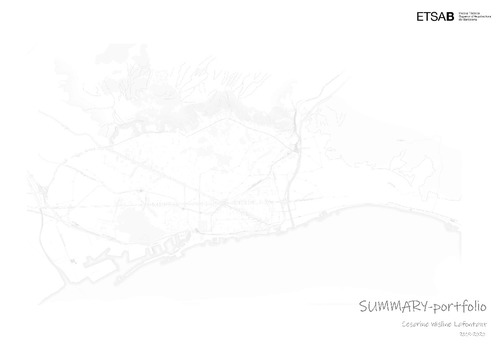Mostra el registre d'ítem simple
Vertical greenery as a key element of sustainability in the urban landscape
| dc.contributor | Ros Ballesteros, Jordi |
| dc.contributor.author | Lafontant, Cesarine Wisline |
| dc.coverage.spatial | east=-3.693571; north=40.411112; name=Calle de Almadén, 21, 28014 Madrid, Espanya |
| dc.coverage.spatial | east=2.1535426; north=41.40466509999999; name=Carrer de Santa Àgata, 33, 08012 Barcelona, Espanya |
| dc.coverage.spatial | east=2.1938889; north=41.4005556; name=Badajoz - Sancho de Ávila, 08018 Barcelona, Espanya |
| dc.coverage.spatial | east=151.2006823; north=-33.884581; name=1 Central Park Ave, Chippendale NSW 2008, Austràlia |
| dc.coverage.spatial | east=0.7329376999999998; north=41.54336389999999; name=Plaça Major, s/n, 25153 Puigverd de Lleida, Lleida, Espanya |
| dc.date.accessioned | 2020-07-31T11:02:40Z |
| dc.date.available | 2020-07-31T11:02:40Z |
| dc.date.issued | 2020-07-20 |
| dc.identifier.uri | http://hdl.handle.net/2117/328171 |
| dc.description.abstract | Nature and human have always coexisted over time. We learned to transform and adapt it to our way and according to our needs. Despite the incredible advances that we have been ableto make within architecture, urban planning, technology, it seems that often the tools used go a little faster than our learning and the way to organize it with our surroundings. Climate change is increasing and being more visible everyday around the world. With this work, it is intended to analyze within examples, one of the multiple methods developed to reduce our impact on the planet. The majority of cities are fairly dense, there is no longer area on the ground for the creation of new green spaces. An alternative was the use of existing spaces, hence the green spaces in horizontal and vertical. Vertical greenery system are taking up more spaces in the city. The progress towards their improvement is considerable, so that in the long term these elements can become sustainable and play a huge role in reducing CO2 in a city. Also help improve the life of the city’s habitant and contribute to the enrichment of the fauna and the flora of the places where they are built. |
| dc.language.iso | eng |
| dc.publisher | Universitat Politècnica de Catalunya |
| dc.rights | Attribution 3.0 Spain |
| dc.rights.uri | http://creativecommons.org/licenses/by/3.0/es/ |
| dc.subject | Àrees temàtiques de la UPC::Arquitectura::Arquitectura sostenible |
| dc.subject | Àrees temàtiques de la UPC::Urbanisme::Impacte ambiental |
| dc.subject | Àrees temàtiques de la UPC::Edificació::Elements constructius d'edificis::Elements de tancament |
| dc.subject | Àrees temàtiques de la UPC::Edificació::Construcció sostenible |
| dc.subject.lcsh | Vertical gardening -- Australia -- Sydney |
| dc.subject.lcsh | Sustainable urban development |
| dc.subject.lcsh | Vertical gardening -- Spain |
| dc.subject.other | Biophilic - Ecosystem services- Energy saving- Green facades- Green wall- Passive energy system |
| dc.subject.other | Biophilic |
| dc.subject.other | Ecosystem services |
| dc.subject.other | Energy saving |
| dc.subject.other | Green facades |
| dc.subject.other | Green wall |
| dc.subject.other | Passive energy system |
| dc.title | Vertical greenery as a key element of sustainability in the urban landscape |
| dc.type | Bachelor thesis |
| dc.subject.lemac | Jardins verticals -- Austràlia -- Sydney |
| dc.subject.lemac | Desenvolupament urbà sostenible |
| dc.subject.lemac | Jardins verticals -- Espanya |
| dc.identifier.slug | PRISMA-138500 |
| dc.rights.access | Open Access |
| dc.date.updated | 2020-07-29T18:37:29Z |
| dc.audience.educationlevel | Grau |
| dc.audience.mediator | Escola Tècnica Superior d'Arquitectura de Barcelona |
| dc.audience.degree | GRAU EN ESTUDIS D'ARQUITECTURA (Pla 2014) |
| dc.description.sdg | Objectius de Desenvolupament Sostenible::11 - Ciutats i Comunitats Sostenibles |
| dc.contributor.committeeMember | Bardí Milà, Berta |
| dc.contributor.committeeMember | Franquesa Sànchez, Jordi |
| dc.contributor.committeeMember | Aquilué Junyent, Inés |




